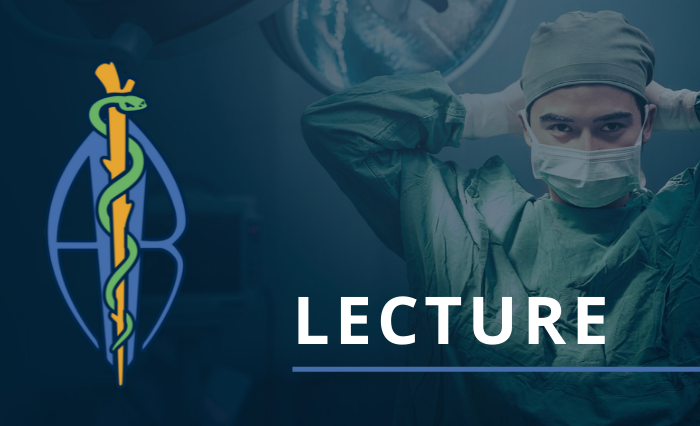The Vital Role of Capnography in Surgical Research: Enhancing Patient Care and Surgical Outcomes

Date: Wednesday, October 11, 2023
Time: 1:30 pm CTDuration: 30 MinutesRoom: Cumberland Ballroom, Salon ABCD
Speakers:
Jan Bernal
Amgen
Amy Martunas
Vertex
Capnography has emerged as an indispensable tool in veterinary medicine, revolutionizing the way we monitor and manage patients during various surgical scenarios. This presentation is dedicated to shedding light on the fundamental principles, practical applications, and clinical benefits of capnography in veterinary practice.
The presentation will commence by introducing the basic principles of capnography, elucidating the physiological underpinnings of carbon dioxide (CO2) measurement, and its significance in assessing both ventilatory and circulatory aspects of patient health. Attendees will gain insights into the mechanics of capnography, including the technology behind mainstream and side stream capnography systems.
Emphasis will be placed on exploring the various uses of capnography within the context of surgical research. Starting with anesthesia, the presentation will delve into how capnography aids in monitoring anesthetic depth, ensuring appropriate ventilation, and early detection of complications. It will also explore capnography’s role in critical care, including the management of respiratory distress, CPR quality assessment, and the rapid identification of life-threatening conditions.
The presentation will highlight the benefits of capnography in species-specific settings, addressing variations in capnography parameters across different animal species and their clinical implications. Practical case examples will be shared in an interactive fashion to illustrate the real-world applications and diagnostic value of capnography in veterinary medicine.
Furthermore, the talk will emphasize the importance of capnography in enhancing patient safety, reducing complications, and optimizing treatment outcomes. Attendees will gain valuable insights into integrating capnography seamlessly into their surgeries to benefit both the animals, surgeons, and anesthetists.
In conclusion, this presentation aims to equip research surgery professionals with a comprehensive understanding of the multifaceted role of capnography in contemporary veterinary medicine. By harnessing the power of capnography, research surgery professionals can elevate the standard of care, improve patient outcomes, and ensure the highest level of safety in a wide range of surgical scenarios.
This is an archived event. Please log in with your member account to access these resources.
Similar Events Happening
Morning Wet Lab – Vanderbilt University
Time: 8:00 am
Basic swine laparoscopy and endovascular interventions paired with an introduction to stereotaxic, intrathecal surgery, and vascular catheterization in the rat
Afternoon Wet Lab – Vanderbilt University
Time: 12:00 pm
Intermediate swine procedures and rat microsurgery and catheterization techniques
Automated Blood Sampling in a Telemetry Cardiovascular Dog Colony
Time: 10:30 am
Speaker – Amanda Wilsey Abbvie Implementation of Automated Blood Sampling (ABS) allows for uninterrupted cardiovascular data collection with simultaneous blood collection throughout a telemetry dog preclinical study. This reduction shortens study timelines, minimizes CV data artifacts, and considerably reduces compound synthesis and the associated costs. Methods: A colony of telemetry instrumented male beagle dogs were implanted and maintained in-house for non-GLP preclinical cardiovascular safety studies. Evaluation of the ABS telemetry dog cardiovascular model; highlighting the benefits and downfalls of the last seven years since implementing Automated Blood Sampling. Results: Since 2016, telemetry dogs implanted with transmitters and vascular access ports [...]
Evaluation of an African Green Monkey Model of Transient Ischemia
Time: 11:00 am
Speaker – Kimicia Isaac, St. Kitts Biomedical Research Foundation / Virscio, Inc. The NIH estimates 800,000 Americans suffer strokes yearly, with significant mortality, long-term disability, and substantial unmet medical need. The lack of translation from small animal models to clinical efficacy has slowed therapeutic development. Nonhuman primates (NHP) share anatomy and physiology with humans important to the clinical pathophysiology of stroke and truly predictive preclinical modeling. An model of transient ischemia is described in adult male African green monkeys (Chlorocebus sabaeus) that promises to enable more robust evaluation of stroke therapeutics. Methods: 11 monkeys received a 180 min occlusion of [...]
Practical Approach to Pain Management for Nonhuman Primates: Enhancing Welfare and Research Outcomes
Time: 1:00 pm
Speaker – Jan Bernal Amgen Pain management is a critical component of responsible animal research and care, particularly in the context of nonhuman primates (NHPs) utilized in biomedical and behavioral studies. This presentation aims to provide a comprehensive overview of practical pain management strategies for NHPs, with a focus on enhancing their welfare while optimizing research outcomes. The presentation will begin by defining pain and classifications of pain. It will emphasize the pain pathways and the multimodal approaches effective at each of the pain pathways, encompassing a wide range of medication and procedural options to modulate pain. Attendees will gain [...]
The Vital Role of Capnography in Surgical Research: Enhancing Patient Care and Surgical Outcomes
Time: 1:30 pm
Speakers: Jan Bernal Amgen Amy Martunas Vertex Capnography has emerged as an indispensable tool in veterinary medicine, revolutionizing the way we monitor and manage patients during various surgical scenarios. This presentation is dedicated to shedding light on the fundamental principles, practical applications, and clinical benefits of capnography in veterinary practice. The presentation will commence by introducing the basic principles of capnography, elucidating the physiological underpinnings of carbon dioxide (CO2) measurement, and its significance in assessing both ventilatory and circulatory aspects of patient health. Attendees will gain insights into the mechanics of capnography, including the technology behind mainstream and side stream [...]



